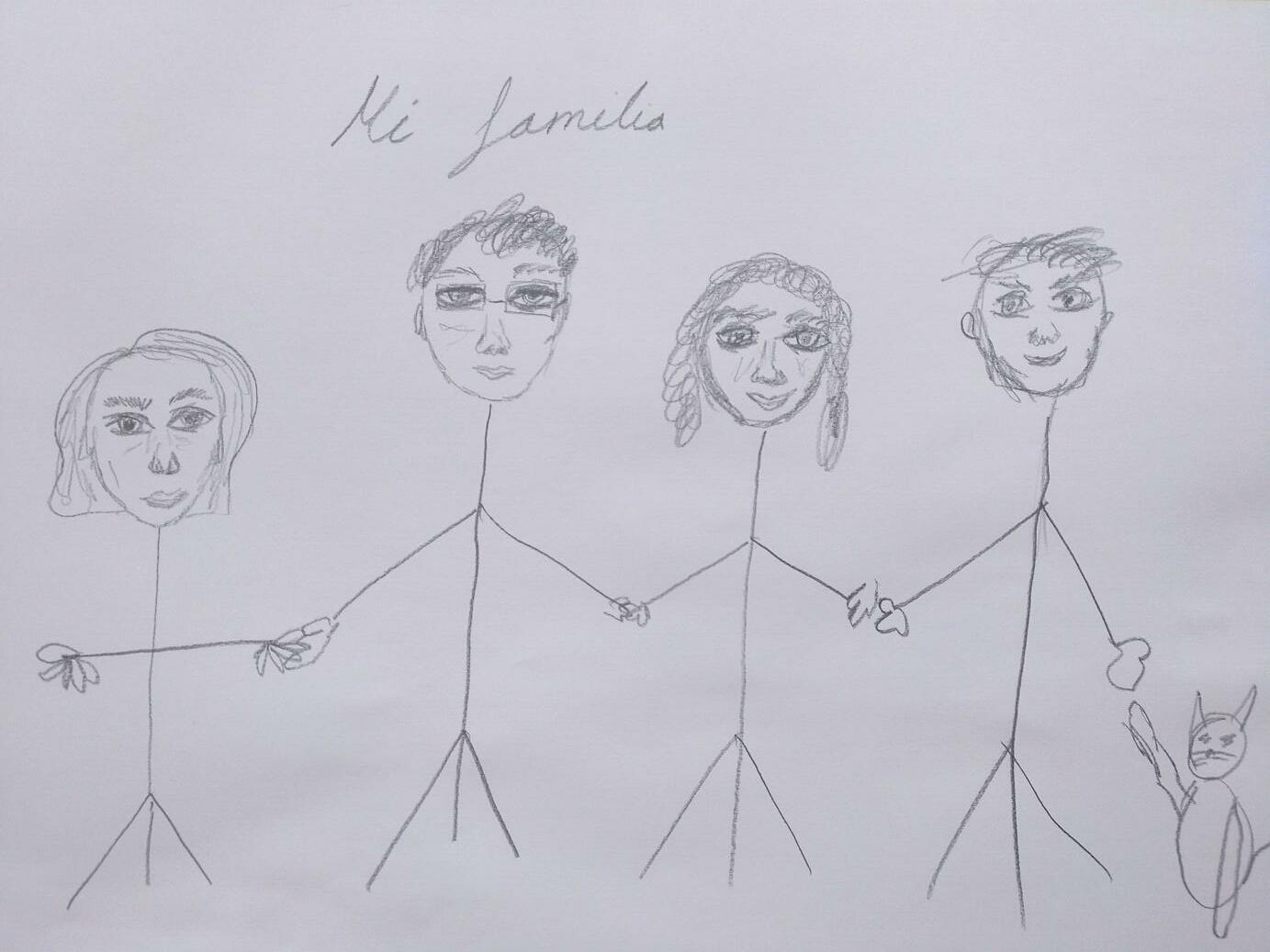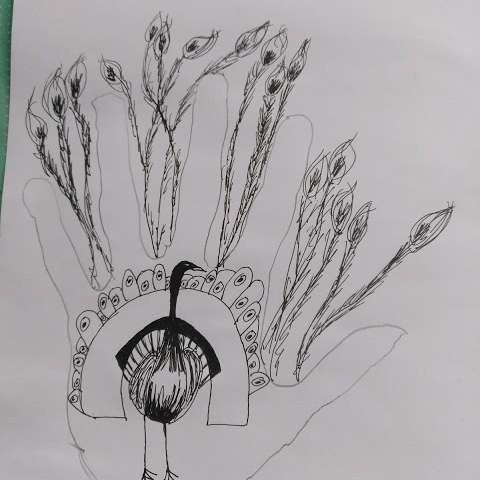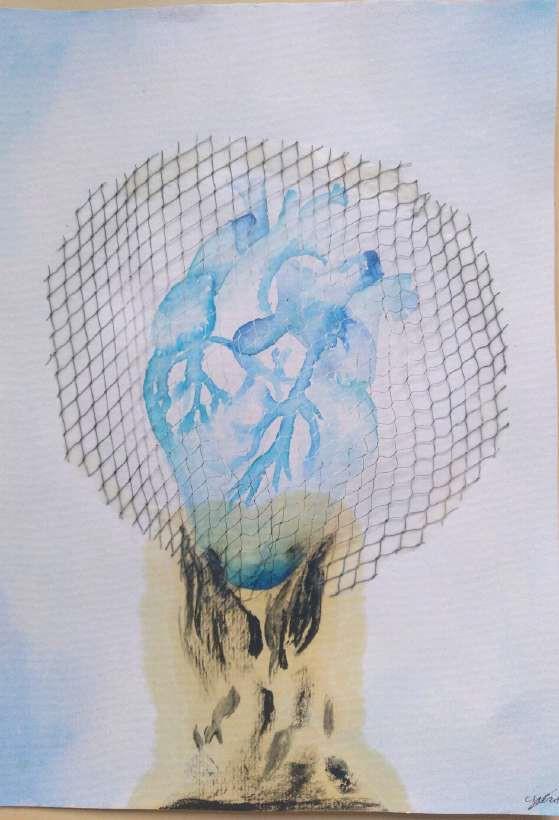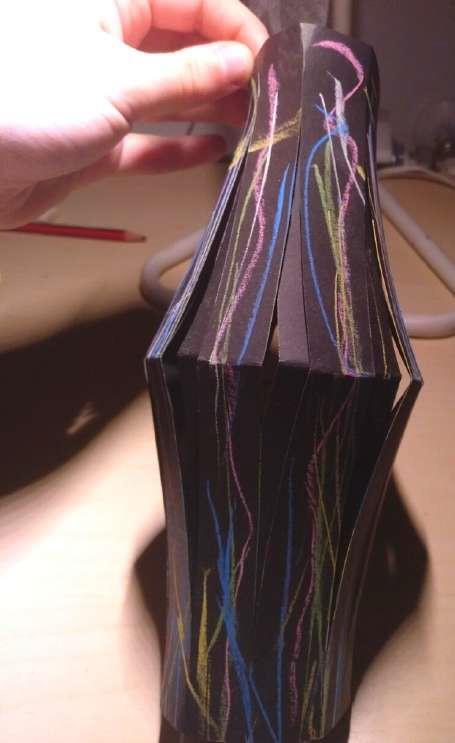Y A I Z A H E R N Á N D E Z E S C O B A R





It is created by the sculptor Angel Very good didactic to promote creativity.
Miró,









It is created by the sculptor Angel Very good didactic to promote creativity.
Miró,




a)Interestingformyinternship
Ihavefounditessentialformyworkasateachertoknowthedifferentstagesofchildren'sdrawing.Thismakesiteasierto assigntasks,becauseyoucannotaskapupiltodosomethingthatheorsheisnotcapableofdoing.Forexample,inthe scribblingstage,itisimpossibletoaska2-3yearoldchildtodrawarealisticsketch,soitisrecommendedtousethisscribbling stagetoexploittheirabstractdrawingtothemaximum,forexamplebyenhancingthedistinctionbetweencolours.
b)creativity1-10
Ithinkthattheproposalisverygood,withregardtotheanalysisofchildren'sdrawings,asitisimportantforateacherto knowhowtoanalysethem,buteffectively,asexplainedbythegroup,nottobescandalisedbytryingtofindmeanings wheretherearenone However,Ithinkthatitcouldhavebeenalittlemorecreative,asitistruethatthedrawingcould havebeendoneincolourorusingadifferentmaterialsuchasafelt-tippenorcrayons Toincludetheuseofdifferent materialsandtobeabletoseehowthestudentsworkwiththem,whichIconsiderpsychologicallycanbequiterich,this study
ThatiswhyIgivetheactivityamarkof:7

Activity: Animal with hand-held silt
I found the methods of teaching drawing with different techniques very interesting. From drawing with ink, markers, pencil and self-portrait. Because many times as teachers, we tend to get complicated when programming activities, forgetting the basics. If this happens in plastic arts, the pupils do not establish the basis for drawing, which will allow them to grow artistically over time. If there are no bases, there is no place to develop.
I think that the proposal is right and interesting, as it promotes creativity, because a silhouette of a hand has to be put to a different use than the one it is usually given. The pupils have to turn the silhouette into something else and take advantage of its shape to do so. Personally, I find it very constructive. However, it would also be interesting if they had proposed to paint something upside down, as it is very interesting for the correct work of line and proportion. I therefore give the activity a : 8
Activity: -Listen anddraw - Draw a house, cloud, sun and flower.

I found the semiotics of expression very interesting, because I think that the task of the teacher is to do exactly what this science proposes. The study of phenomena that are ignored but have always remained in reality. I think that it is fundamental to know these phenomena, because it is these subtleties that in the end create the person and in art it is fundamental to make the subtleties of expression visible, thus giving the importance that each work that the students create deserves.
I find the proposed activity very interesting because I think it is interesting to see how students draw each of these objects. I think that we are conditioned from a very early age to draw them in a certain and specific way, and this is an interesting subject to study. I think that the proposal could be improved by asking the students to draw these three objects, but not in the conventional way, emphasising this before doing it. I have tried to give the drawings a touch of loose and personal line. That is why I give the activity a : 7
Activity: Short story with drawings "creating a story". YesterdayIwenttotheparkand Ifoundacolourfulcat.Thecitywas asalways,grey,darkandreekingofconcreteandmetal.Butthatcat,that animalwiththesoftfurswayinginthewind,seemedtoharbourthefour seasonsinitssmallbeing.

I have found the theory of multiple intelligences extremely interesting for my teaching work. I believe that human beings have different types of intelligence: emotional, creative, linguistic, mathematical, etc. Therefore, there is no one person more intelligent than another. I have always refused intelligence tests (even the most expert ones carried out by psychologists) because I consider that they only measure a specific part of intelligence, so I have never believed in the number that is supposed to define intelligence. I believe that the same should be done with students, the mind is so plastic, so mouldable that it is necessary to exploit it to the maximum to promote creativity.
I found the proposal extremely interesting, because apart from working on individual creativity, it encourages group work. I think the idea of drawing the pupils' ideas and continuing the story with the whole class is great. The improvement I would suggest is that all the work done could be displayed on a continuous piece of paper, I think it is essential for the pupils to see what they have achieved.
That is why I give the activity a : 9

a)
I found the concept of collective creativity and collective knowledge and how to promote it in the classroom very interesting. I think that it is fundamental for art education in primary school to work on these aspects, because making artistic creations is not the work of a single individual, sometimes when working in a group, these experiences are enriched, achieving greater creativity when all the ideas come together. It is true that there are passive and active agents, but working in a group also means learning to express oneself more and, on the contrary, to let others express themselves as well.
The proposal seems to me to be very creative, since it promotes creativity in the pupils, if they are told two words with which they have to invent a composition, they will have to brainstorm and finally put down on paper the most appropriate composition. To improve the activity, I propose assigning a pictorial style to work with, for example cubism (adapted to the level of course).
That's why I give the activity a : 8,5
I have drawn my closest friend, Lucía valdivia. Hobbies and tastes : Retro rap, travelling, illustration, nature andthe beach.

I consider it very important to know about the stages of aesthetic development, because it is very interesting to see how one goes from favouritism without awareness of external opinions, to realism, considering perfection above all, expressiveness, seeking creativity, style and form that takes into account the history of art and finally autonomy that considers art as a means of transmitting questions. I consider that these intermingled stages are what should be transmitted to the pupils, expressiveness allows the great potential of creativity, but a little realism is necessary because it helps above all to make ideas concrete.
I find the proposal interesting but not very creative, since it does not really give way to the imagination, the procedure is very concrete and it is possible that the results are generally very similar. To improve the activity, I would ask to draw the hobbies in a non-conventional way or using different styles and artistic forms each one. That is why I give the activity a : 7
Activity: Draw and createCr u nRsmÍbToo ICcre aOdo c . on the canva application).

I consider it very important. Art approached from a critical curriculum, not only on an educational level, but also on a personal level, because I have always considered art as a hammer to change reality and not as a mirror to portray it. Indeed, from such an approach, this is what it is all about. Minorities must be made visible in art, and we must rethink how art is taught, which is always oriented from an oppressive power. An example is the lack of teaching about women artists, we all know Picasso, but not Tamara Lempicka. All this must change and this is what we must transmit to the students in our classes.
The proposal seems interesting to me, and I understand the context in which it is used, even so I think that a theme should have been given to create the logo or different themes to choose from that would make the students think, such as ecology, LGTBI feminism, etc., so that the creation of the logo would involve a previous search.
That is why I give the activity a score of : 8

When doing the work, I have found very, very interesting all the ideas found about doing Waldorf activities, this is because they are all focused on promoting creativity in students. The Waldorf teaching method is incredible, even though I personally don't like the way it is taught in Spain, because being public schools such an innovative and free method is relegated to a few minorities who are elites, because in my personal experience of visiting the school, those were my thoughts. In my future teaching, I would like to teach by this method.
Activity: Make an instrument out of household orrecycled material Used: old printed acetate (from my parents) as a water stick.


I consider the Reggio Emilia methodology to be very interesting for my future teaching work, as it is based on artistic experimentation with different materials. The teacher acts as a guide, that is, as a light on the path to direct the pupils, allowing them to find their own way. It seems to me that this should be the task of the teacher, to allow the pupils to experiment with different options and finally choose the most appropriate one. Thanks to those rights and wrongs that arise from experimentation, much is learned.
The proposal seems excellent to me, as it highly encourages creativity and not only that, recycling, encouraging giving a second use to something supposedly "wasted". Apart from creativity, it should be stressed that this capacity for invention and reuse is increasingly necessary, as in the consumerist world we live in, in which we generate a huge amount of waste, it is very necessary to find ways to reuse it. It also focuses on experimentation with materials. That is why I give this activity a : 10
I find the Nau Esocla school in Palma de Mallorca very interesting, as its methodology is fascinating. It is based on being dynamic, participatory, promoting democracy in the classroom, the participation of parents and family members. All this to achieve autonomy in students, responsibility and encourage teamwork. All of this seems fundamental to me, but above all the autonomy of the pupils and their ability to guide their own learning.
I consider the proposal to be interesting, as it works on how to get volume out of a 2D line, but I think it is too limited and does not allow students to express themselves freely. To improve it, I suggest that this activity could be carried out with other parts of the body such as the foot.
For this reason I give this activity a : 6

Activity: The Asthetic Eye -Analysing the properties of an object
Glasses Analysis:
Sensory properties: round, smooth, brightly coloured and small.
Formal properties: the object serves to protect the eyes from the sun; if the lenses were to disappear, the glasses would look very different.
Expressive properties: I think that the roundness gives a retro look to the glasses and the pink colour of the lenses a certain avantgarde look.


Technical properties: the object was created with care in order to fit the lenses into the frame.
I found Vygotsky's higher psychological processes very interesting, since this theory is based on the fact that human development can only be explained in relation to social interaction. This theory takes into account the context in which human beings live, which also determines their artistic production. That is why I believe that since it is so decisive, it is important to teach art to students from their proximity and contexts that they can understand. For example, in an art class in the Bronx, it would probably not be wise to begin by explaining French impressionism without first having captured the students' attention by showing them the mural and urban art that surrounds them.
I find the activity interesting in terms of developing appreciation of the objects around us and being able to train the artist's eye, appreciating the subtle details, shadows and lights or tonalities, but I consider that it lacks manual or digital art practice, I would have complemented it with an interpretative drawing of the object.
For all these reasons I give the activity a : 5
Activity: And you,what are you like? -Portrait of me as a child drawn by me.

a)
I consider the MUS-E programme to be very interesting because it does exactly what we want to achieve with the plastic arts, that they are practised more in schools. In addition, the programme seeks equity, as its aim is to include people without resources and possibly racialised people in school, through art. I consider this fight for equal opportunities, which teachers must carry out, to be a fundamental part of their work, since this is the mission of the school in the first instance.
The proposal is a good one, I think it is interesting for pupils to draw and make a self-portrait, in order to be aware of one's personal features. However, I consider that it is not completely creative, as the pupils are not given freedom of expression. To improve it I propose to let the hair of the self-portrait use any technique and be very expressive.
That is why I give this activity a :6.